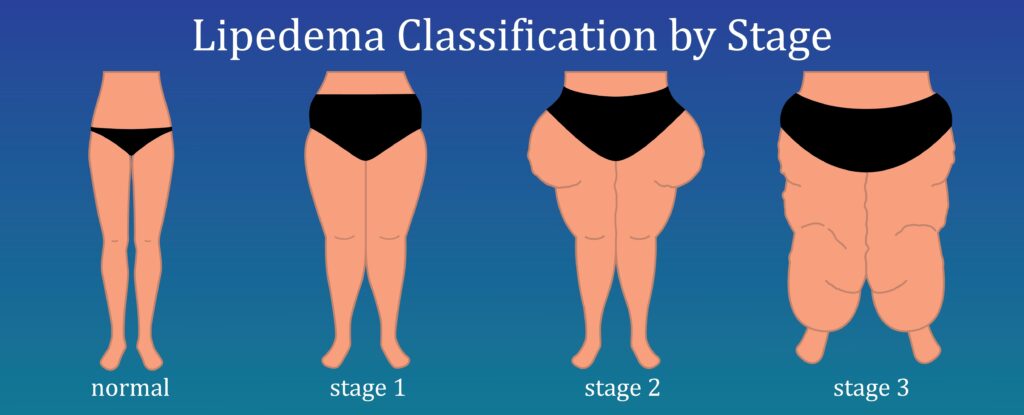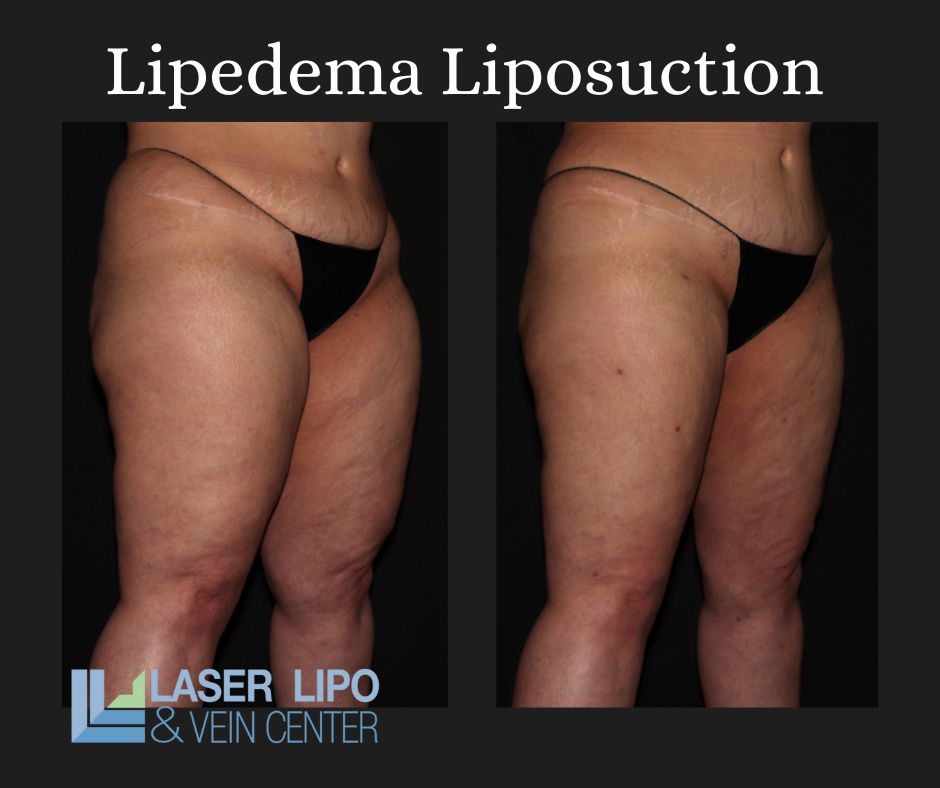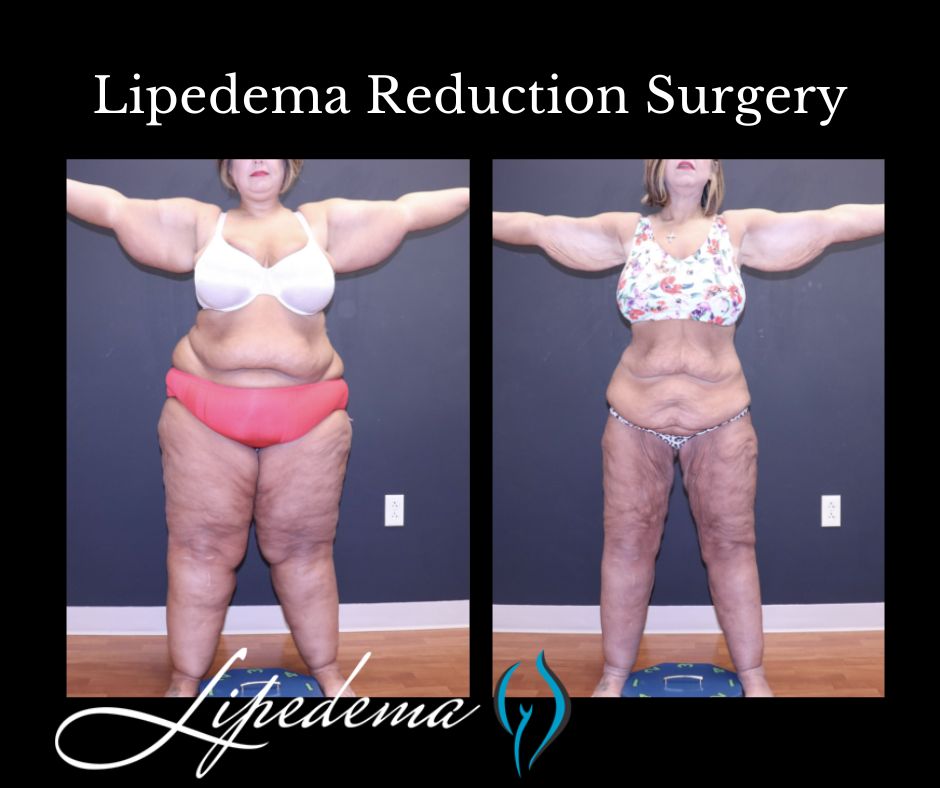

In today’s society, body image and weight management are often hot topics of discussion. Many individuals strive to achieve their desired physique through diet and exercise. However, for some, the struggle to lose weight in certain areas, particularly the legs, can be frustrating and confusing. This leads us to a common question: Is it lipedema or obesity? In this comprehensive guide, we will explore the key differences between lipedema and weight gain, helping you understand your body better and make informed decisions about your health and well-being.
Understanding Lipedema
Lipedema is a chronic and progressive medical condition characterized by the abnormal accumulation of fat cells, primarily in the lower body. It predominantly affects women, with an estimated prevalence of 7-11% in Western countries. Lipedema causes a disproportionate increase in fat deposits in the legs, hips, and buttocks while sparing the hands and feet. Individuals with lipedema often have a smaller waist and upper body, creating a distinct pear-shaped appearance.
One of the primary distinctions between lipedema and weight gain is that lipedema fat is resistant to traditional weight loss methods such as diet and exercise. Despite leading a healthy lifestyle, individuals with lipedema find it challenging to reduce fat in the affected areas. Lipedema fat can also exhibit unique characteristics, such as a gelatinous texture and the presence of small nodules beneath the skin.
Lipedema is thought to have a genetic component, with hormonal changes during puberty, pregnancy, and menopause potentially triggering its onset or exacerbation. It is crucial to understand that lipedema is not caused by obesity. While many individuals with lipedema may also be overweight or obese, the condition itself is independent of weight status.


Differentiating Lipedema from Weight Gain
It is important to distinguish between lipedema and weight gain to ensure accurate diagnosis and appropriate treatment. While both conditions involve the accumulation of excess fat, they have distinct characteristics and underlying causes.
Symptoms and Presentation
Lipedema presents with specific symptoms that differentiate it from general weight gain. Individuals with lipedema often experience:
- Enlarged legs, hips, and buttocks, with a disproportionate appearance compared to the upper body
- Pain, tenderness, and discomfort in the affected areas
- Easy bruising and sensitivity to touch
- Dimpling or lumpy texture in the skin
- Swelling and edema
- Fatigue and decreased mobility
In contrast, weight gain typically occurs more evenly throughout the body and is not associated with pain or other physical symptoms commonly seen in lipedema.
Response to Lifestyle Changes
One of the key distinctions between lipedema and weight gain is the response to lifestyle changes. Individuals with lipedema often find that diet and exercise alone do not significantly impact the fat accumulation in the affected areas. Despite their best efforts, weight loss may be minimal or not occur at all in these specific regions. On the other hand, individuals experiencing general weight gain will typically see changes in their body composition through proper nutrition and physical activity.
Distribution of Lipedema Fat
Lipedema fat distribution differs from general weight gain. Lipedema fat primarily affects the lower body, including the legs, hips, and buttocks, while sparing the hands and feet. This leads to a distinct shape and disproportion between the upper and lower body. In contrast, weight gain is typically more evenly distributed throughout the body, without the characteristic pear-shaped appearance.
Psychological and Emotional Impact
Lipedema not only affects physical health but can also have a significant psychological and emotional impact. Many individuals with lipedema experience depression, low self-esteem, and social isolation due to the perceived body image differences and the challenges associated with finding appropriately fitting clothing. Weight gain, on the other hand, may have similar psychological effects but is not specifically linked to the unique challenges faced by individuals with lipedema.


Diagnosis and Treatment
Accurate diagnosis is essential to establish appropriate treatment strategies for individuals with lipedema. If you suspect that you may have lipedema, it is crucial to consult with a healthcare professional experienced in the diagnosis and management of this condition. They will evaluate your symptoms, medical history, and perform a physical examination to assess fat distribution and other associated features.
Currently, there is no cure for lipedema, but various treatment options can help manage symptoms and improve quality of life. Treatment for lipedema may include:
- Compression therapy: The use of compression garments to reduce swelling and improve circulation in the affected areas.
- Manual lymphatic drainage: A specialized massage technique that helps stimulate lymphatic flow and reduce edema.
- Dietary modifications: Following an anti-inflammatory diet that may help manage symptoms and reduce inflammation.
- Exercise and physical therapy: Engaging in low-impact exercises, such as water-based activities, to improve mobility and circulation.
- Psychological support: Seeking counseling or therapy to address the emotional impact of lipedema and develop coping strategies.
- Liposuction: In severe cases, liposuction may be considered to remove excess lipedema fat and provide relief from symptoms.
It is important to note that liposuction is not a cure for lipedema but can offer significant improvements in symptoms and overall quality of life for select patients.


Conclusion
Understanding the difference between lipedema and weight gain is crucial for accurate diagnosis and appropriate treatment. Lipedema is a chronic condition characterized by the abnormal accumulation of fat in the lower body, while weight gain is a general increase in body weight. Lipedema fat is resistant to traditional weight loss methods, and individuals with lipedema often experience specific symptoms, such as pain, tenderness, and easy bruising.
If you suspect you may have lipedema, consulting with a healthcare professional or an experienced lipedema specialist is essential to develop an individualized treatment plan that addresses specific needs and goals. Dr. Wright and his team of experts are here for you whenever you’re ready to start your treatment journey!
Remember, your health and well-being are important, regardless of your body shape or size. By seeking appropriate care and support, you can live a fulfilling life and embrace your unique beauty.




